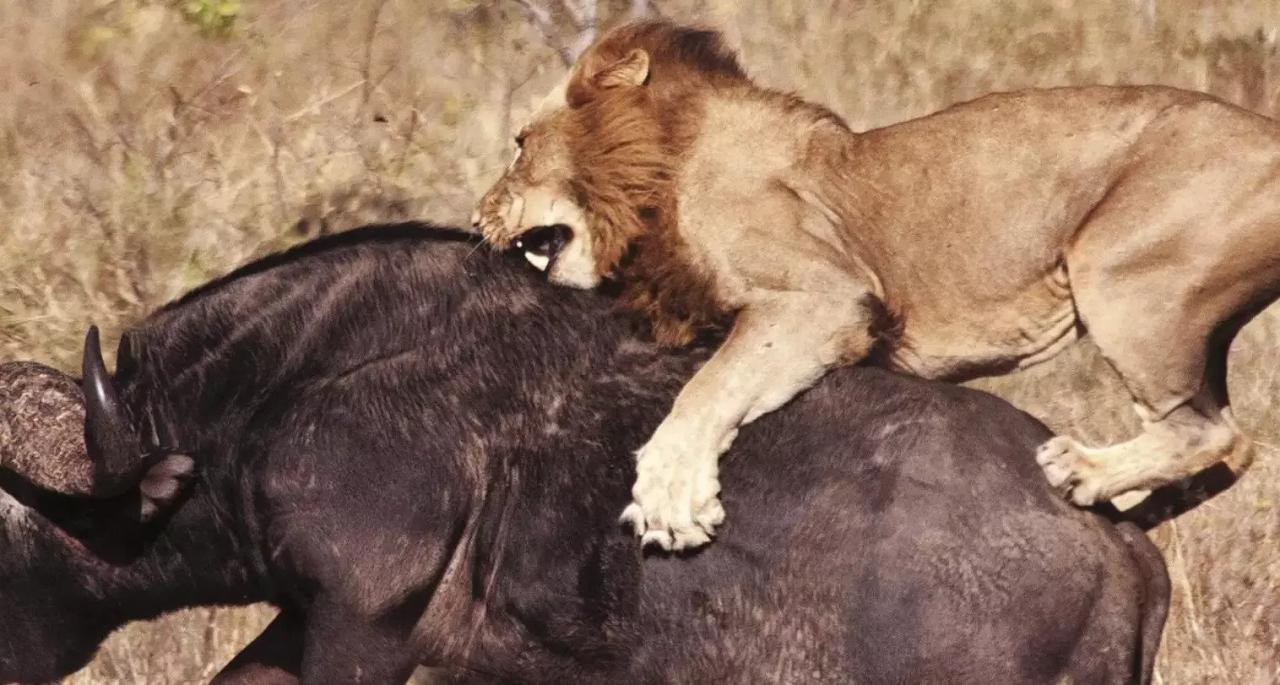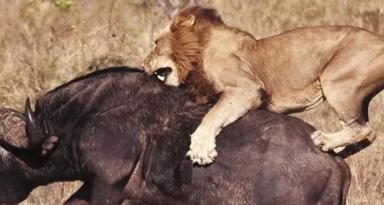
RACE OF LIFE (1)
S01E07 - Race of Life
With predators practically always on the lookout for a meal, prey must constantly avoid being eaten. Any defensive adaptation that prey can utilize adds to the chances of survival for its species. Some adaptations are defense mechanisms which can give the prey an advantage against their enemies. The first is very direct and comes naturally. Animals can use speed as a very effective means of escaping predators. In the evolutionary history of big herbivores and the carnivores that prey upon them, the phrase “arms race”is only technically a metaphor. Antelope are literally born to run, and many of the things that chase them, such as the cheetah, are either masters of endurance or champion sprinters. The evolutionary story almost writes itself: over millions of years of chasing, and being chased, wherever predators evolved to move quickly, their prey were selected to run even faster. Except of course there’s more to life than running for your life. An antelope’s frame is under more demands than evading cheetahs—it also needs to travel long distances to follow food availability with the shifting rainy season. The ostrich meanwhile stands at one extreme of bird evolution, for although unable to fly, of all the birds the ostrich runs the fastest race of life. More peculiar still is the Golden Wheel spider, the only creature known to turn itself into a wheel in order to get away from trouble. There are many ways to win the race, when the goal is always survival.
Dodatne informacijeEpizode
Season 1RACE OF LIFE (3)
Deserts are dry. Deserts are extreme. True deserts get less than 18 cm of rain per year. True deserts have very few plants. Semi-desert habitats have enough rainfall to support more plant and animal life. Either way, deserts are not easy places for animals to live. Desert animals have evolved to handle the desert’s heat and lack of water. They have adapted their bodies and behaviors to the desert climate. Most can survive on small amounts of water and many get all of their water from their food. Some drink maybe once a week and travel considerable distances to find isolated waterholes and springs. Large animals seek shade during the hottest part of the day. Some animals dig a hollow depression into the ground and lie in the cooler soil while others are nocturnal. Many reptiles and other animals protect themselves from the extreme temperature by spending their time in burrows. The scorpion is one of the most ancient creatures on earth, in existence since life first crawled out of the sea. One look and you can see why they’re born survivors. Not only are their bodies armoured against the desert heat - and other predators - but all scorpions have pincers at the front and a poisonous sting at the end of their tail. Rattlesnakes can be two meters long. They’re fast, tough and with a deadly venom, making them one of the most dangerous snakes in the world. But nobody seems to have told the Roadrunner, who regard rattlesnakes as quite suitable prey.

RACE OF LIFE (4)
RACE OF LIFE (4)
Synopsis: These are Nature’s own Battletanks, and (with the exception of the Indian Elephant), all endemic to the African continent. The African Savannah is the stage for thousands of battles every day. How do elephants, these large, cumbersome creatures survive and even prosper on a diet that even the strictest vegetarian would pass on! Well for one thing, most other animals get out of their way. But lions and hyenas are not always so easily moved - they prey on young, sick and old elephants in particular. This seemingly gentle giant has been revealed to have a darker side in the last few years too. They may survive on just plant life, but that doesn’t mean they don’t like a fight - to the death. Elephants have been observed attacking and killing Rhinos in the last 20 years. It’s a savage clash. Meanwhile, the Rhino, a tough looking customer if ever there was one, is an endangered species. When the great herds go on the search for food, predators go on the hunt for them. If ever there was an animal that seems destined to survive, it’s the Rhino, which has been around for over 6 million years. But it too has an enemy: mankind - the deadliest foe of all. Then there’s the hippopotamus. An adult hippo is a huge, aggressive animal, and even the largest crocodiles tend to stay away from it. However, when baby hippos stray from their mothers, then crocodiles, lions and hyenas will have a go if they can get away without being attacked themselves by adults in the baby hippo’s herd. That’s why baby hippos must stay close to Mum

RACE OF LIFE (6)
RACE OF LIFE (6)
With predators practically always on the lookout for a meal, prey must constantly avoid being eaten. Any defensive adaptation that prey can utilize adds to the chances of survival for its species. Some adaptations are defense mechanisms which can give the prey an advantage against their enemies. The first is very direct and comes naturally. Animals can use speed as a very effective means of escaping predators. In the evolutionary history of big herbivores and the carnivores that prey upon them, the phrase “arms race”is only technically a metaphor. Antelope are literally born to run, and many of the things that chase them, such as the cheetah, are either masters of endurance or champion sprinters. The evolutionary story almost writes itself: over millions of years of chasing, and being chased, wherever predators evolved to move quickly, their prey were selected to run even faster. Except of course there’s more to life than running for your life. An antelope’s frame is under more demands than evading cheetahs—it also needs to travel long distances to follow food availability with the shifting rainy season. The ostrich meanwhile stands at one extreme of bird evolution, for although unable to fly, of all the birds the ostrich runs the fastest race of life. More peculiar still is the Golden Wheel spider, the only creature known to turn itself into a wheel in order to get away from trouble. There are many ways to win the race, when the goal is always survival.
Race of Life
With predators practically always on the lookout for a meal, prey must constantly avoid being eaten. Any defensive adaptation that prey can utilize adds to the chances of survival for its species. Some adaptations are defense mechanisms which can give the prey an advantage against their enemies. The first is very direct and comes naturally. Animals can use speed as a very effective means of escaping predators. In the evolutionary history of big herbivores and the carnivores that prey upon them, the phrase “arms race”is only technically a metaphor. Antelope are literally born to run, and many of the things that chase them, such as the cheetah, are either masters of endurance or champion sprinters. The evolutionary story almost writes itself: over millions of years of chasing, and being chased, wherever predators evolved to move quickly, their prey were selected to run even faster. Except of course there’s more to life than running for your life. An antelope’s frame is under more demands than evading cheetahs—it also needs to travel long distances to follow food availability with the shifting rainy season. The ostrich meanwhile stands at one extreme of bird evolution, for although unable to fly, of all the birds the ostrich runs the fastest race of life. More peculiar still is the Golden Wheel spider, the only creature known to turn itself into a wheel in order to get away from trouble. There are many ways to win the race, when the goal is always survival.
O emisiji
There are many fine examples of evolutionary history in the natural world. Animals adapt through a series of small, random mutations and usually do so in order to compete more effectively for food, water and space. Animals with certain adaptations are more likely to be stronger and therefore produce more young. Crocodiles are certainly of an ancient lineage, they are believed to be 200 million years old, whereas dinosaurs became extinct 64 million years ago. Crocodiles have an incredible ability to adapt and survive in the Race of Life. They have a very slow metabolism, and can go up to a year with no food. They also have a 4 chamber heart that helps them control their temperature, and lungs that allow them to hold their breath underwater for up to 2 hours. Sharks have gone through the process of adaptation and evolutionary experimentation as well. The modern descendants of ancient sharks have incorporated many of the successful traits of the past. They have changed over time, but the changes have not been too extreme, only nature perfecting an originally near perfect design. Whales are an amazing species that have evolved from land dwelling creatures millions of years ago to the marine mammals we know today. Over the course of their evolution whales have developed echolocation, thick layers of blubber, modified lungs, better hearing and larger arteries among other things to ensure their survival and prosperity.